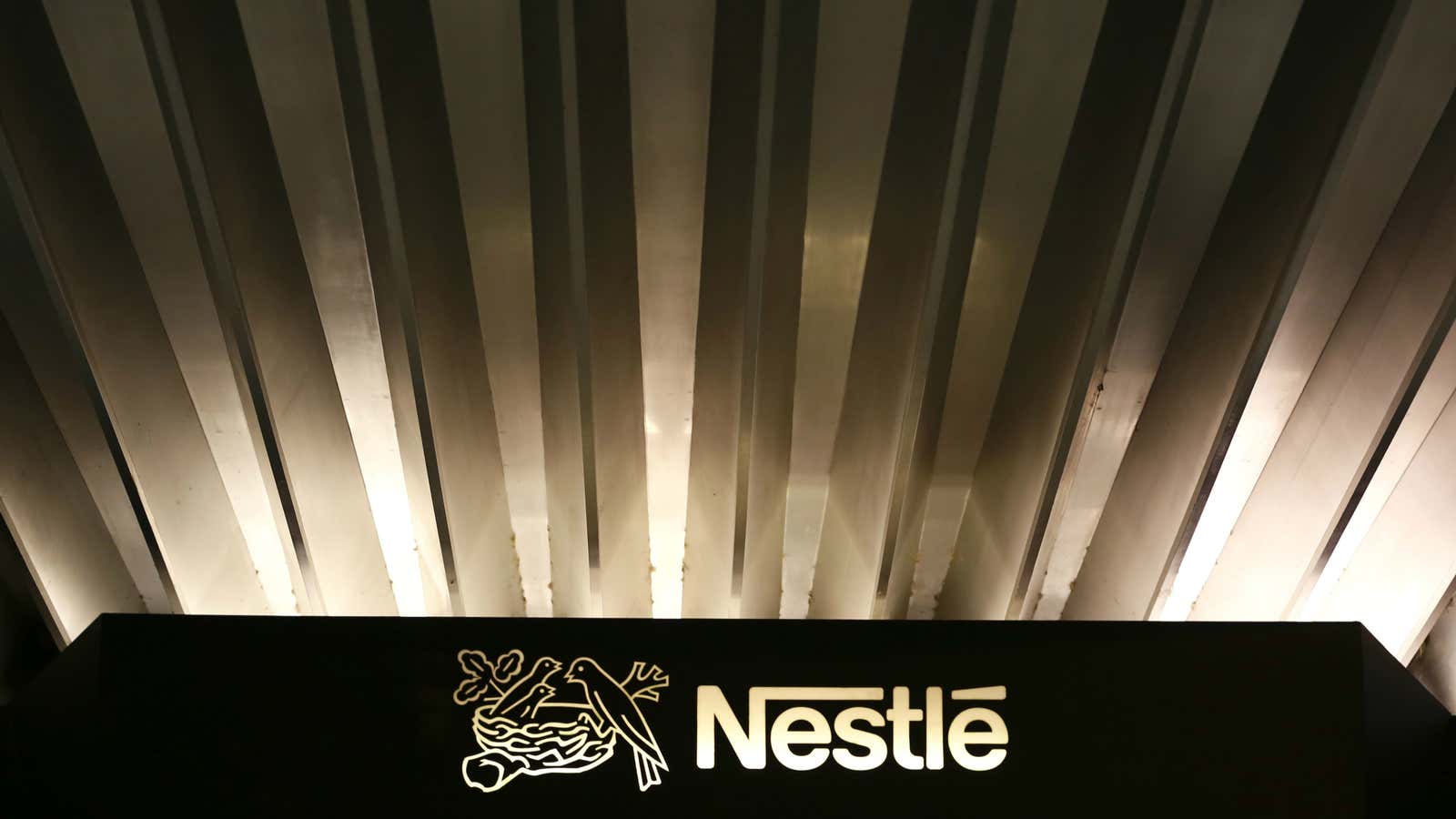In a controversial break from the rest of the food industry, the world’s largest food company today voiced support for a White House-backed initiative that seeks to set voluntary sodium reduction targets for major food companies.
Nestlé is supporting the US Food and Drug Administration’s effort to get food makers to decrease the amount of sodium Americans eat, and the Switzerland-based company is also reaching out to members of the US Congress who could otherwise stymie the initiative by blocking funding, sources say.
The reduction effort comes as part of a larger White House initiative to combat chronic health problems rampant in the US, including Type 2 diabetes, cardiovascular disease, and obesity.
Most of the sodium Americans consume comes from processed foods, the very items manufactured by industry giants such as Nestlé, Unilever, Mars, Pepsico, and General Mills. But the idea of targeted reductions is unpopular among many food companies, which would have to come up with creative ways to replace an ingredient that gives some of their biggest name brands their trademark flavors.
By supporting the FDA initiative, Nestlé is breaking from its fellow members of a powerful food industry alliance. The Grocery Manufacturers Association has lobbied against the FDA setting targets until after two other government bodies—the Centers for Disease Control and Prevention and the Institute of Medicine—have completed their own studies. Those are expected to take at least 18 months to complete, well into the term of president Barack Obama’s successor. The FDA initiative could be wrapped up as early as June.
In the meantime, Nestlé has decided to move forward with or without the US government’s new sodium targets. In a statement released today, the company said it plans to rework its product recipes to help people consume no more than 2,000 milligrams of sodium per day, 300 milligrams less than the current US government recommendation.
Americans, on average, currently eat much more than that recommendation:
“We encourage our industry colleagues, along with others in both the private and public sector, to join forces and combine our varied expertise to help people move toward healthier eating patterns, including a diet lower in sodium,” said Paul Grimwood, CEO of Nestlé US.
Some of the world’s largest food companies have lately touted ambitious plans to rework the recipes of their most popular products, responding to consumer demand for healthier foods. General Mills is taking artificial flavors and ingredients out of its breakfast cereals, Panera also ditched artificial additives, and Mars and Nestlé have been doing the same.
Nestlé said 43% of its products currently meet its own sodium targets, but it’s aiming to add more, including brands such as Stouffer’s, DiGiorno, Tombstone, Jack’s, and Hot Pockets. A single serving of BBQ Chicken pizza from the California Pizza Kitchen brand (one-third of the pizza) now has 640 mg of sodium, roughly 27% of the US recommended daily value. A meatballs and mozzarella Lean Pockets serving contains 490 mg, or 20% of the US recommended daily value.
